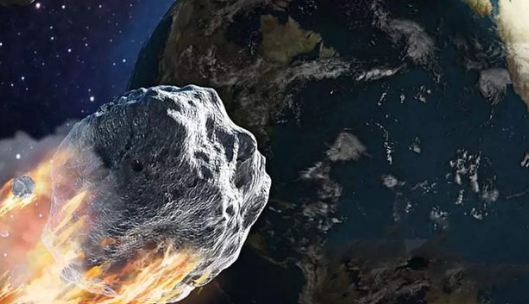We have to find a way to stop the impact or this one can cause massive destruction. Nothing like the big one 65 million years ago, but still…
In a recent hypothetical exercise by NASA, it was determined that a potentially hazardous asteroid has a 72% chance of impacting Earth, highlighting significant gaps in our current planetary defense readiness. The exercise, conducted during the fifth biennial Planetary Defense Interagency Tabletop Exercise at the Johns Hopkins Applied Physics Laboratory in Maryland, involved nearly 100 representatives from various U.S. agencies and international partners.
The exercise aimed to assess our planet’s response capabilities to a potential asteroid threat. Although no imminent asteroid threats are known, the exercise underscored the importance of being prepared. Lindley Johnson, Planetary Defense Officer Emeritus at NASA Headquarters, emphasized that while a large asteroid impact is a preventable natural disaster with enough advance notice, the scenario presented to participants was particularly challenging due to the high probability of impact and the long lead time.
@NASA warns of potential planet-sized asteroid impact: There’s 72% chance of Earth collision on this date – The Economic Times https://t.co/3LHrOf9SEr
— ash🦊 (@foxy_babyy) June 23, 2024
During the exercise, participants were faced with a scenario in which a previously undetected asteroid was discovered with a 72% likelihood of hitting Earth on July 12, 2038. This scenario provided participants with 14.25 years to respond. However, initial observations did not conclusively determine the asteroid’s size, composition, or exact trajectory, complicating response strategies.
Key gaps identified in the exercise included unclear decision-making processes, limited readiness for rapid space mission deployment, the need for improved global coordination in communication, and undefined asteroid-impact disaster management plans. These gaps suggest that while theoretical tools and strategies for asteroid deflection exist, practical readiness and global coordination need significant enhancement.
NASA said that based on the preliminary report, there was a 72% chance of the asteroid hitting Earth in about 14 years. To be precise, the asteroid is expected to hit Earth by July 12, 2038.#NASA #Earth 🌎 pic.twitter.com/4FwTfw4EEd
— kumar Ashutosh Anand (@Ashutos59663780) June 23, 2024
NASA’s recent DART (Double Asteroid Redirection Test) mission was a focal point of discussions, being the first in-space demonstration of asteroid trajectory alteration technology. The DART mission confirmed that a kinetic impactor technique could effectively change an asteroid’s path. This successful test provides a foundational technology that could be utilized should a real threat materialize.
To bolster Earth’s defenses against potential asteroid impacts, NASA is developing the NEO Surveyor, an infrared space telescope specifically designed to detect and track most potentially hazardous near-Earth objects. Set for a launch in June 2028, the NEO Surveyor aims to provide ample warning time to plan and execute a defense strategy against an impending asteroid impact.
#NASA‘s exercise finds a 72% chance of an asteroid impact on July 12, 2038. The simulation highlighted gaps in decision-making, rapid mission readiness, and global coordination. DART shows we can alter trajectories. Upcoming NEO Surveyor, launching in 2028, aims to detect threats… pic.twitter.com/dq3e9wgoT1
— Future Tech Feed (@future_techfeed) June 23, 2024
This exercise and the development of technologies like the DART and NEO Surveyor underscore NASA’s proactive approach to planetary defense. I think by the time this one is coming in for final approach on our planet, we will have the technology to move it out of the way, in the least.
Key Points:
i. NASA conducted a hypothetical exercise revealing a 72% chance of an asteroid hitting Earth, which highlighted significant gaps in global planetary defense readiness.
ii. The exercise involved nearly 100 representatives from various U.S. government agencies and international partners, simulating a response to an asteroid threat 14.25 years in the future.
iii. Key issues identified included unclear decision-making processes, inadequate readiness for rapid deployment of space missions, and the need for better global communication and disaster management plans.
iv. The exercise discussed NASA’s DART mission, which successfully demonstrated a kinetic impactor’s ability to alter an asteroid’s trajectory, confirming its potential as a viable defense strategy.
v. NASA is developing the NEO Surveyor, an infrared space telescope set for a 2028 launch, designed to improve the detection of potentially hazardous near-Earth objects well before they pose a threat.
Lap Fu Ip – Reprinted with permission of Whatfinger News



